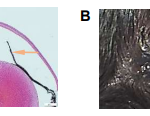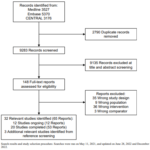2023-03-28 インペリアル・カレッジ・ロンドン(ICL)
意識を失った選手は高速の衝撃を受けたため、脳幹領域も高い「脳のひずみ」を経験し、意識を失う原因になる可能性があることが分かりました。これにより、接触スポーツにおける脳の損傷リスクを減らすための情報が提供されると期待されています。
<関連情報>
- https://www.imperial.ac.uk/news/243996/sports-related-brain-injuries-reveal-mechanics/
- https://academic.oup.com/brain/advance-article/doi/10.1093/brain/awac485/6955847?login=false
意識喪失の生体力学的特徴:エリートアスリートの頭部外傷の計算機モデル化 The biomechanical signature of loss of consciousness: computational modelling of elite athlete head injuries
Karl A Zimmerman, Janie Cournoyer, Helen Lai, Samuel B Snider, David Fischer, Simon Kemp, Clara Karton, Thomas B Hoshizaki, Mazdak Ghajari
Brain Published:22 December 2022
DOI:https://doi.org/10.1093/brain/awac485

Abstract
Sports related head injuries can cause transient neurological events including loss of consciousness and dystonic posturing. However, it is unknown why head impacts that appear similar produce distinct neurological effects. The biomechanical effect of impacts can be estimated using computational models of strain within the brain.
Here, we investigate the strain and strain rates produced by professional American football impacts that led to loss of consciousness, posturing or no neurological signs. We reviewed 1280 National Football League American football games and selected cases where the team’s medical personnel made a diagnosis of concussion. Videos were then analysed for signs of neurological events. We identified 20 head impacts that showed clear video signs of loss of consciousness and 21 showing clear abnormal posturing. Forty-one control impacts were selected where there was no observable evidence of neurological signs, resulting in 82 videos of impacts for analysis. Video analysis was used to guide physical reconstructions of these impacts, allowing us to estimate the impact kinematics. These were then used as input to a detailed 3D high-fidelity finite element model of brain injury biomechanics to estimate strain and strain rate within the brain.
We tested the hypotheses that impacts producing loss of consciousness would be associated with the highest biomechanical forces, that loss of consciousness would be associated with high forces in brainstem nuclei involved in arousal and that dystonic posturing would be associated with high forces in motor regions.
Impacts leading to loss of consciousness compared to controls produced higher head acceleration (linear acceleration; 81.5 g ± 39.8 versus 47.9 ± 21.4; P = 0.004, rotational acceleration; 5.9 krad/s2 ± 2.4 versus 3.5 ± 1.6; P < 0.001) and in voxel-wise analysis produced larger brain deformation in many brain regions, including parts of the brainstem and cerebellum. Dystonic posturing was also associated with higher deformation compared to controls, with brain deformation observed in cortical regions that included the motor cortex. Loss of consciousness was specifically associated with higher strain rates in brainstem regions implicated in maintenance of consciousness, including following correction for the overall severity of impact. These included brainstem nuclei including the locus coeruleus, dorsal raphé and parabrachial complex.
The results show that in head impacts producing loss of consciousness, brain deformation is disproportionately seen in brainstem regions containing nuclei involved in arousal, suggesting that head impacts produce loss of consciousness through a biomechanical effect on key brainstem nuclei involved in the maintenance of consciousness.


